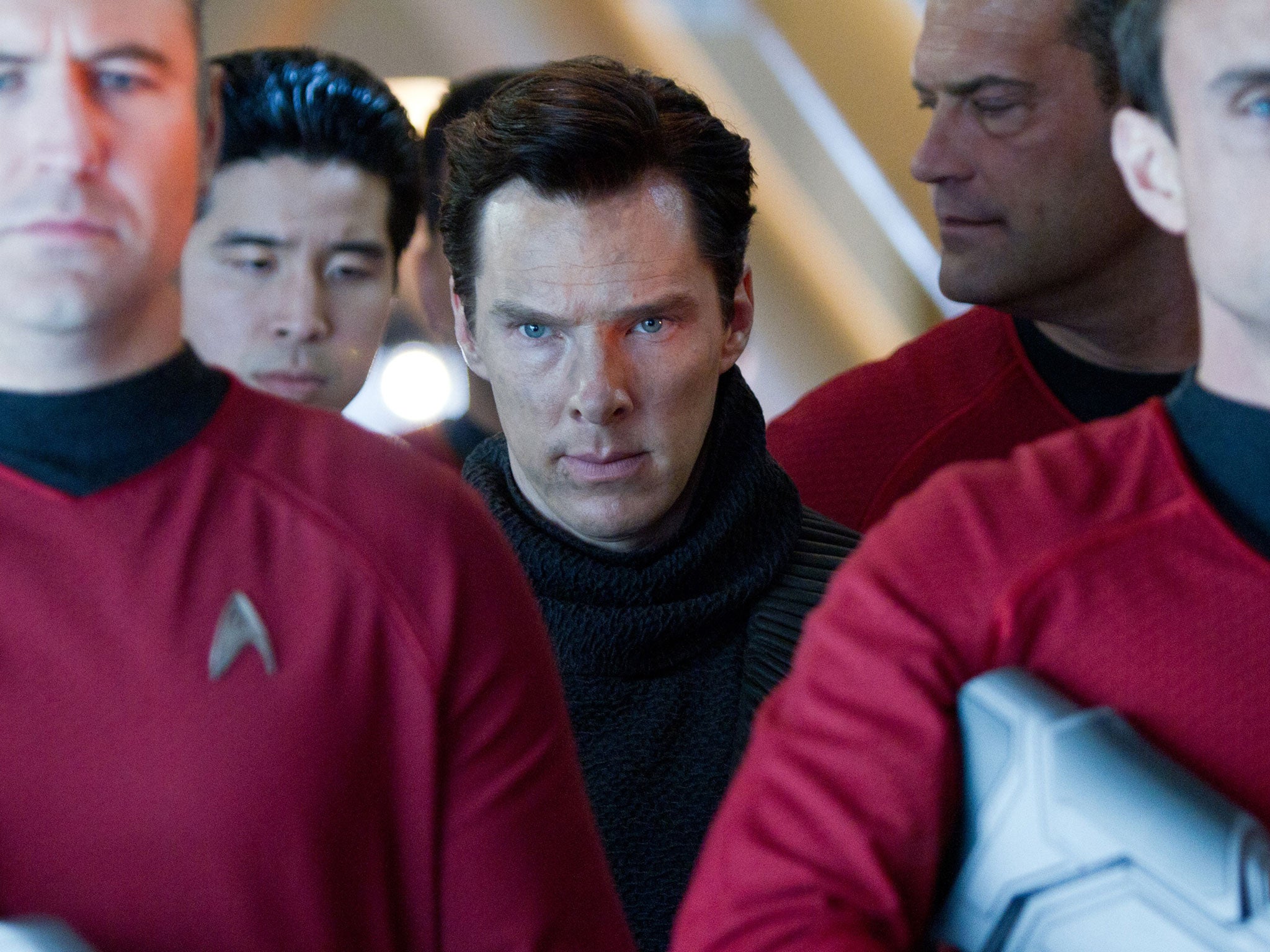Jonathan Romney on Star Trek Into Darkness: Benedict Cumberbatch, a supervillain worlds apart
JJ Abrams soaks the screen with colour, but a flared nostril and swirling coat steal the show

Your support helps us to tell the story
From reproductive rights to climate change to Big Tech, The Independent is on the ground when the story is developing. Whether it's investigating the financials of Elon Musk's pro-Trump PAC or producing our latest documentary, 'The A Word', which shines a light on the American women fighting for reproductive rights, we know how important it is to parse out the facts from the messaging.
At such a critical moment in US history, we need reporters on the ground. Your donation allows us to keep sending journalists to speak to both sides of the story.
The Independent is trusted by Americans across the entire political spectrum. And unlike many other quality news outlets, we choose not to lock Americans out of our reporting and analysis with paywalls. We believe quality journalism should be available to everyone, paid for by those who can afford it.
Your support makes all the difference.Ah, special effects blockbusters! They don't always have me biting my knuckles with excitement, but a good CGI extravaganza can be relied on to bring out the aesthete in me. Because plastic abstraction, rather than slam-bang action, is what these films at their best are really about.
Here, for example, is what I loved about the opening sequence of Star Trek Into Darkness: the intense redness of the vegetation on planet Nibiru, the bright yellow cloaks of its inhabitants, the powdered-chalk whiteness of their faces. Later, I've scribbled approving notes about the nicely chequered fabric in the starship Enterprise's crew uniforms and the finely observed roughness of the suede sofa on which one of the characters expires. This is not decadent perversity on my part. These multi-million-dollar epics, when filmed with such tactile precision (this one's shot on high-res Imax cameras), are just as much about aesthetic finesse as they are about hardware, explosions and San Francisco deafeningly razed to the ground.
On this level, JJ Abrams's second chapter of the rebooted space saga is immensely satisfying – gorgeously crafted son et lumière. And lumière is Abrams's thing: he's notorious for his penchant for lens flare (most of it, I'd guess, CGI-simulated), and he's gone full out here. Those streaks of blue and purple luminescence are smeared so lavishly across the screen that you'll be wiping your 3D goggles every five minutes. As for spacescapes, Abrams and his team – including cameraman Dan Mindel, designer Scott Chambliss and SFX maestro Roger Guyett – have brought wonder back to the tired old business of planets looming majestically on to the screen. And the old-school 3D, with projectiles heaving at you from every angle, is so impressive that even the camera passing through a beaded nightclub curtain looks pretty cool.
What the film lacks, though, is human presence. That was the surprise ace of Abrams's 2009 opening episode – notably Zachary Quinto's wry, surprisingly vulnerable Spock. He's less riveting here, and indeed has less to be riveting with. The writers (Roberto Orci, Alex Kurtzman, Damon Lindelof) seem much less interested in character than last time, and Spock's pensive speech about choosing to resist emotions feels as if it's grudgingly thrown in because Quinto's contract stipulates he gets to do some proper acting. As for Chris Pine's Captain Kirk, played as a maverick hedonist jock, this reimagining was thin gruel last time, and hasn't much improved.
No one, in any case, gets to outperform Benedict Cumberbatch's mysterious interplanetary villain "John Harrison". A sort of space ninja de luxe, this vengeful renegade first blows up the Starfleet's archive, then strafes its high command, and later has the temerity to hide out in a Klingon stronghold, where he singlehandedly bests a whole contingent of the furrowed-browed ones. He's so classy, in fact, that he gets imprisoned in one of those glass cells where they put only the really brainy, top-level evil-doers: your Magnetos and Hannibal Lecters. Cumberbatch gets to wear an even more spectacular coat than he does as the BBC Sherlock Holmes – baggier, more billowing and with a hood. As for his voice, it's so sepulchrally resonant that it could have been synthesised from the combined timbres of Ian McKellen, Patrick Stewart and Alan Rickman holding an elocution contest down a well. And he flares a mean nostril, to boot.
Star Trek Into Darkness is so rich in sensuous attractions that, unless you're one of the true faithful, the plot may be of thin interest; in fact, for me, the narrative pretty much went flat about an hour in. The writers don't quite pull off the liberal subplot with Iraq war overtones, as Kirk's crew are pulled into a reprisal mission by a hawkish commander. But that commander, played by Peter Weller – RoboCop, as was – ends up coming quite scarily into his own.
If you want wit and narrative twistiness that actually packs surprises, rather than just triggering the next exchange of fire, Iron Man 3 is the one. But this film leads on pure light and colour, and on its considerable brilliance at unfolding three-dimensional space in front of a moving camera. I'm looking forward to Abrams sticking his neck out in his next chapter, Star Trek Into Abstraction – just give me these hazy blue smears and drag me through a beaded curtain, and I'll be happy.
Join our commenting forum
Join thought-provoking conversations, follow other Independent readers and see their replies
Comments